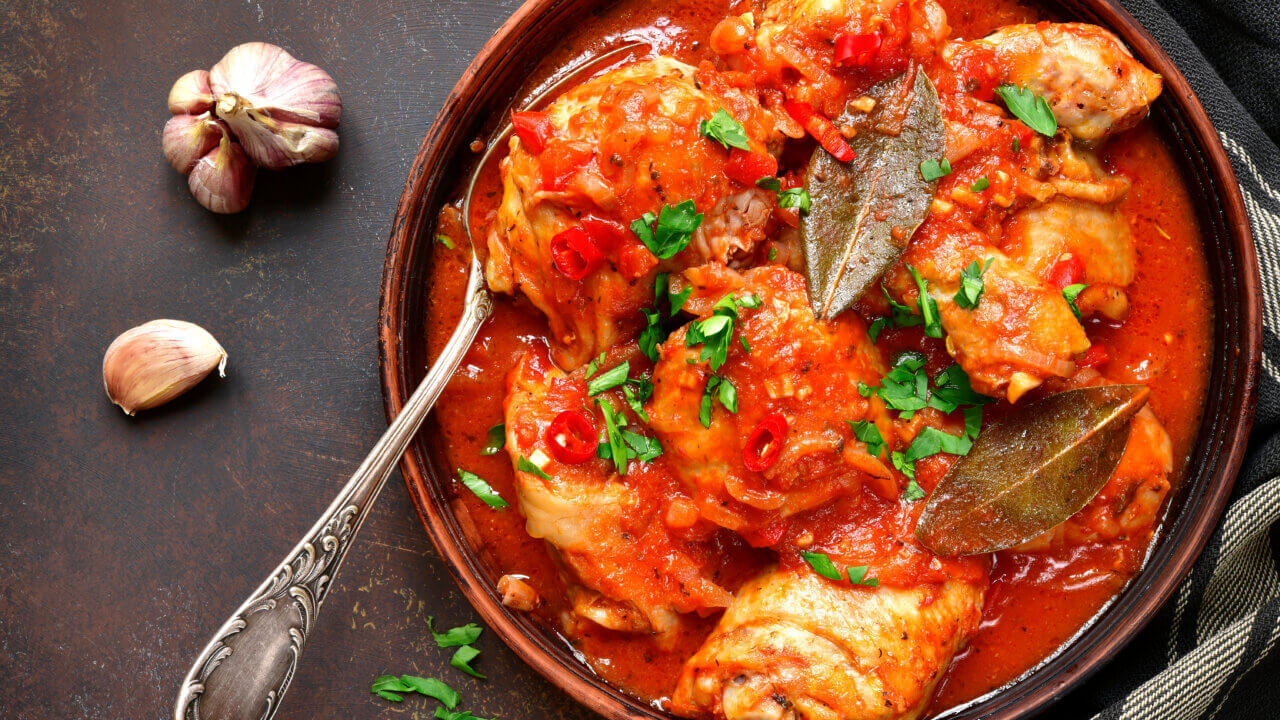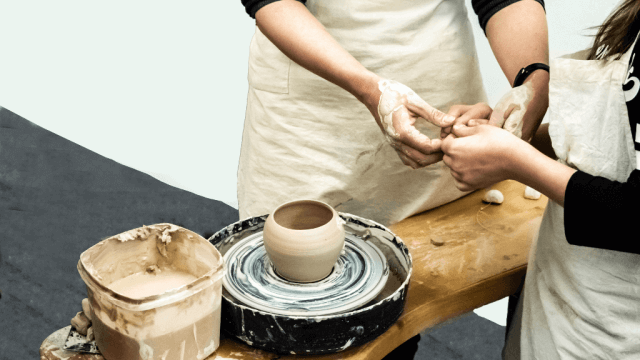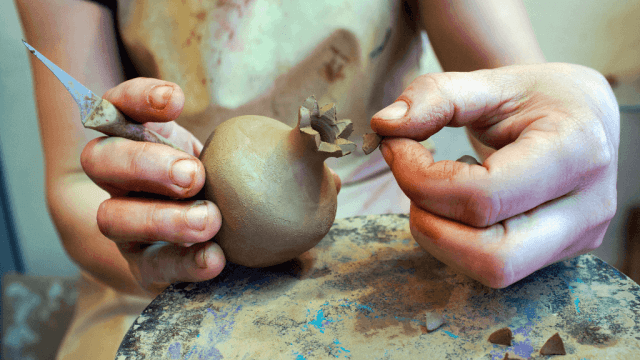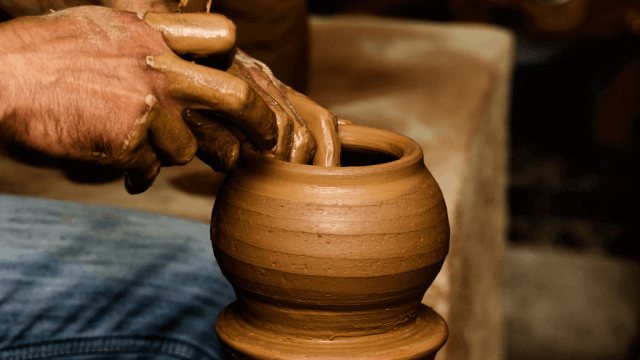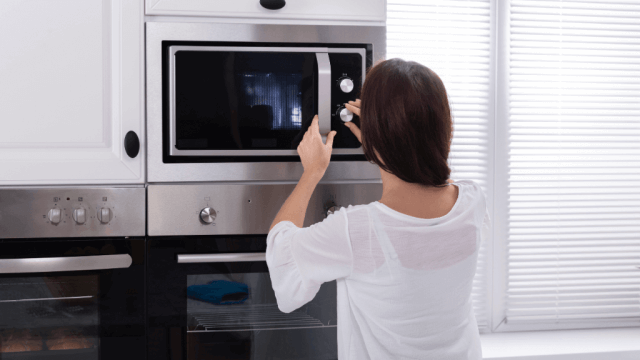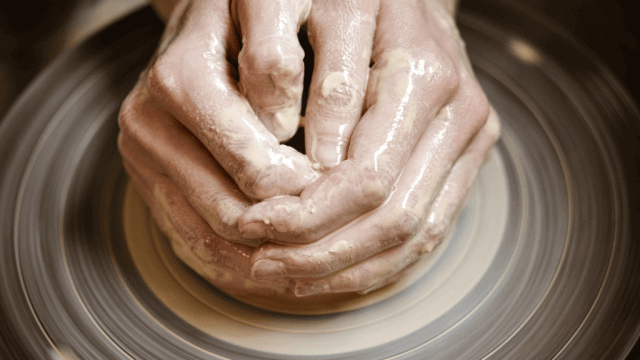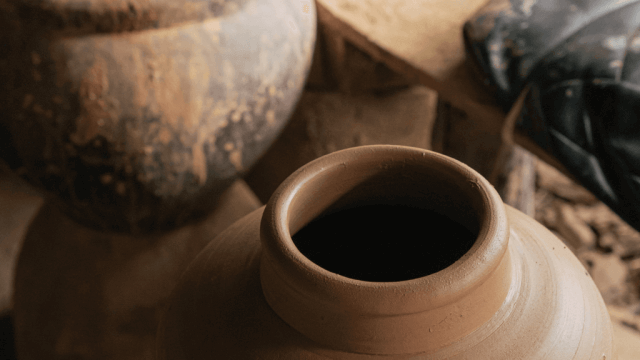To determine if pottery is food safe, check for lead-free and cadmium-free glazes, ensure it’s vitrified (properly fired to a high temperature), and look for stamps or certifications proving it meets industry safety standards. Additionally, avoid using pottery with cracks, crazing or unglazed surfaces for food.
Understanding Food Safe Pottery
Food-safe pottery ensures that your dishes are free from harmful substances and bacteria that could pose health risks. When selecting pottery for food use, consider the following factors:
Lead-Free and Cadmium-Free Glazes
Lead and cadmium are toxic substances that can leach into food. When purchasing pottery, look for labels stating it is “lead-free” and “cadmium-free,” or ask the maker about the glazes used.
Proper Vitrification
Vitrification refers to the firing process that makes ceramic ware non-porous. Properly-fired pottery is essential for food safety, as it prevents bacteria growth. To check if a piece is vitrified, tap on it gently; a dull sound may indicate an issue.
Industry Safety Standards
Look for stamps or certifications stating that the pottery meets industry safety standards such as those set by The American Society for Testing and Materials (ASTM), The European Committee for Standardization (CEN), or other recognized bodies.
Signs of Unsafe Pottery
When examining pottery for food use, be cautious of the following warning signs:
Visible Cracks and Crazing
Cracks and crazing (fine lines in the glaze) can harbor bacteria, making the pottery unsafe for food use. Avoid such pieces when selecting pottery for food.
Unglazed Surfaces
Unglazed pottery is porous and can easily absorb liquids and bacteria. Avoid using unglazed pieces for food, or consider a food-safe sealant if necessary.
Taking Care of Your Food Safe Pottery
Once you have identified your food safe pottery, it is crucial to maintain its cleanliness and integrity. Here are some tips:
Proper Cleaning
Wash pottery with warm, soapy water, and dry it thoroughly. If dishwasher-safe, place it on the top rack and opt for a gentle cycle.
Avoid Temperature Shock
Do not expose your pottery to sudden temperature changes, such as transferring from the refrigerator to the oven, to prevent cracks and damage.
Inspect Your Pottery Regularly
Periodically inspect your pottery for cracks, crazing, or damage. If any issues are noted, it may be time to retire the piece from food use.
Conducting a Scratch Test
In addition to the aforementioned checks, performing a scratch test can help determine the quality and safety of pottery. Take a knife or sharp metal object and scratch the glazed surface. If the glaze comes off easily, it might not be food safe. Quality glazes should resist scratching.
Home Testing for Lead and Cadmium
If you still have concerns about lead or cadmium content in your pottery, you can use a home testing kit available at most hardware stores. While these tests may not be conclusive, they can provide additional insight into the safety of your pottery.
The Role of Clay Types
The type of clay used also plays a role in food safety. Earthenware, which is more porous, can harbor bacteria if it is not properly glazed and fired. Stoneware and porcelain are less porous and better suited for food use, provided they have correct glazes and firing.
Knowing Your Pottery Maker
While industry certifications and stamps are helpful, knowing the credibility of your pottery maker can further ensure food safety. Research the pottery manufacturer or speak with the artisan to better understand their practices, choice of materials, and adherence to safety standards.
Safe Pottery Storage
Proper storage of your pottery is essential to maintain its quality and safety. Ensure that the pieces are stored in a clean and dry area free from dust, moisture, and temperature fluctuations. Stack ceramic dishes with care, using padding between each layer to prevent scratching or chipping.
Frequently Asked Questions About Food Safe Pottery
In this section, we address some common questions related to the safety and usage of pottery for culinary purposes. These insights will further inform readers about best practices to identify and utilize food safe pottery.
Can I use vintage pottery for food consumption?
While vintage pottery can be charming and appealing, it may contain lead or other harmful materials, especially if it was produced before modern safety standards were established. Exercise caution when using vintage pottery for food consumption and consider using a lead test kit to confirm its safety.
Is it safe to reheat food in my pottery dishes?
It depends on the type of pottery and whether it can withstand high temperatures. Porcelain and stoneware are generally safe for reheating food in the oven or microwave, provided they are not subjected to extreme temperature changes. Check the manufacturer’s recommendations and avoid using pottery with cracks or crazing.
How can I be sure that handmade pottery is food safe?
When purchasing handmade pottery, inquire about the materials and techniques used by the artisan. They should use lead-free and cadmium-free glazes, and the pottery should have undergone proper vitrification. Additionally, check for certifications or trustworthiness of the maker to ensure the pottery meets industry safety standards.
How can I know if I am using the proper glazes during my own pottery making process?
When purchasing glazes for your pottery, always opt for lead-free and cadmium-free options, and verify compatibility with your clay type. Check labels and specifications carefully, and ensure that the glazes meet industry safety standards. Use the correct firing temperature for your glazes and conduct a scratch test to assess durability.
Can I use pottery with metallic glazes or gold accents for food?
Metallic glazes and gold accents can be aesthetically pleasing, but not all of them are food safe. Check for labels or manufacturer’s instructions indicating that the metallic glazes are safe for contact with food. Furthermore, it is advisable not to use pottery with metallic glazes in the microwave, as it can cause sparking or damage.
